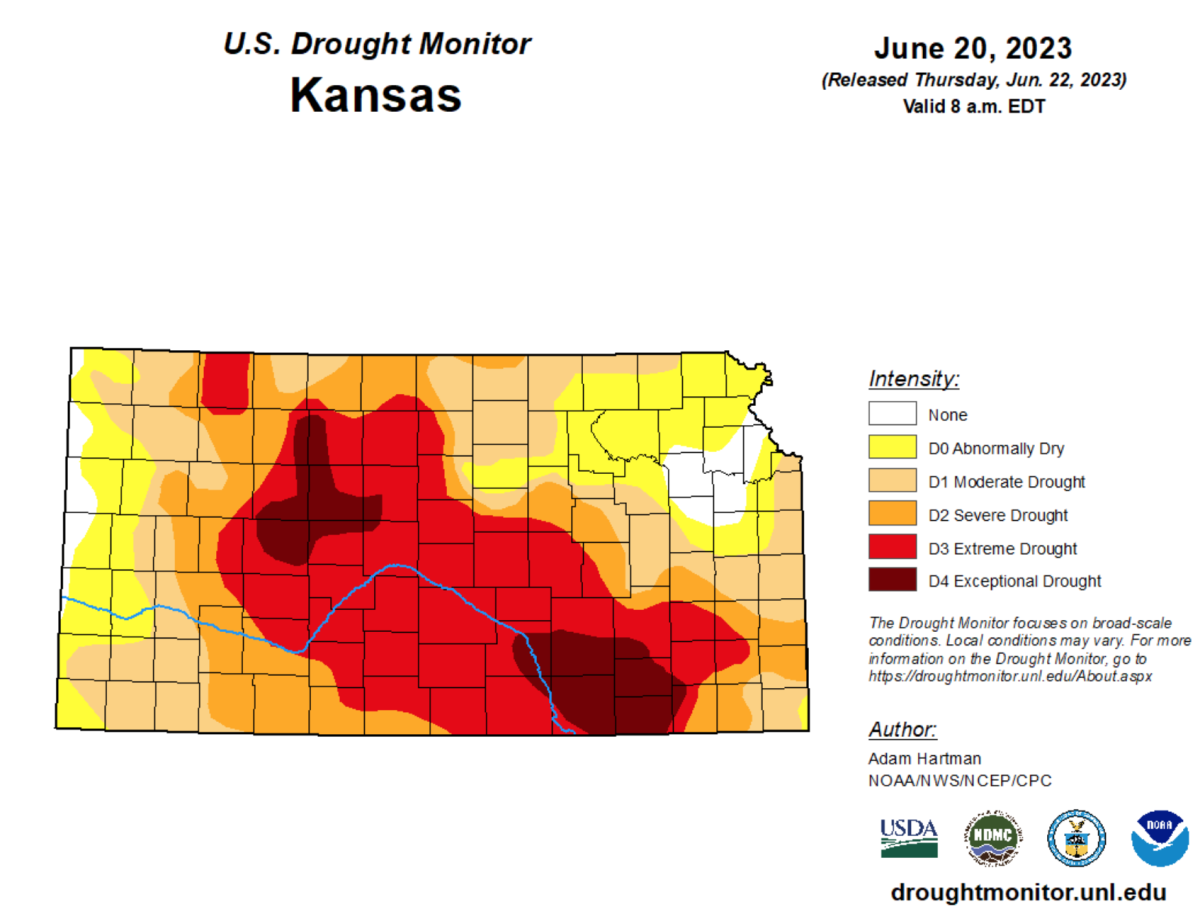As Kansas is gripped with intense drought, the large amounts of wheat and other crops grown in the state are being put at risk this summer.
Kansas is usually responsible for producing around 25 percent of the U.S. winter wheat crop, but due to the large areas of the state currently plagued by what Reuters reported as the worst drought conditions for over a decade, these crops may be in short supply in the coming months.
U.S. Drought Monitor data shows that as of June 20, 7.76 percent of the state was gripped by "exceptional drought", while 16.58 was in "abnormally dry" conditions, 22.19 percent was under "moderate drought," 19.30 percent in "severe drought," and 30.23 "extreme drought". Only 3.93 percent of the entire state is currently drought-free. This drought is thought to be driven by low rainfall and higher winds.

The majority of the worst drought is located in the center of the state, which is also where much of Kansas's croplands lie. U.S. Department of Agriculture data shows that more than half of the state's wheat crop was rated as either "poor" or "very poor" as of mid-June, with only 1 percent of the state's wheat crop being rated as in "excellent" condition.

Other crops are being affected by the drought, with 64 percent of corn production area and 57 percent of soy area being impacted by this week's drought, according to the USDA data.
"The 2023 season has been close to the worst in the last decade, as evidenced by the historic low NDVI values [normalized difference vegetation index; a measure of plant health based on the density of green leaves on vegetation] and driven partly by below-average rainfall," University of Maryland and NASA Harvest Consortium researcher Ritvik Sahajpal told NASA Earth Observatory. "There have been some showers in the critical May-June flowering time period that have helped elevate the NDVI values, but the conditions are poor overall."
Kansas normally produces about 25% of winter wheat in the U.S. winter wheat crop, but that may not happen this year due to prolonged drought.
— NASA Earth (@NASAEarth) June 23, 2023
This U.S. Drought Monitor map shows drought intensity as of June 20, 2023, with 79% of Kansas in a drought. https://t.co/ubJl4x6cZG pic.twitter.com/stDzF6yCh5
This year's drought in Kansas is thought to be the worst since 2012, Reuters reports, during which U.S. corn yields fell to the lowest in 17 years, according to the USDA. At the start of this June, the USDA Economic Research Service projected the state's farmers would produce the smallest wheat crop since 1961.
"Based on June 1 conditions, Kansas's 2023 winter wheat crop is forecast at 191 million bushels, down 22 percent from last year's crop," the report reads. "Average yield is forecast at 29 bushels per acre, down 8 bushels from last year. Acreage to be harvested for grain is estimated at 6.60 million acres, unchanged from last year. This would be 81 percent of the planted acres, compared with last year's 90 percent harvested."
One study published in the journal npj Climate and Atmospheric Science in early June found that in 1981, extreme temperature conditions that can damage wheat crops were expected to occur approximately once in 100 years, while today, they are forecast every 6 or so years.
The heat in Kansas may only worsen in the coming years, due to the effects of climate change.
Newsweek reached out to various experts for comment on the condition of the Kansas drought, but last year, Auroop Ganguly, director of the Sustainability and Data Sciences Laboratory at Northeastern University, Boston, told Newsweek, "On the hydrometeorological hazards side, heat waves are getting—and are further projected to get—even hotter, cold snaps persisting even if growing less frequent, heavy precipitation getting heavier, and so on.
"The impacts can be far-reaching across multiple sectors, such as ecosystems and coastal processes, aspects of the water-energy-food nexus, infrastructures and urban lifelines," Ganguly said.
Do you have a science story to share with Newsweek? Do you have a question about drought? Let us know via science@newsweek.com.
Uncommon Knowledge
Newsweek is committed to challenging conventional wisdom and finding connections in the search for common ground.
Newsweek is committed to challenging conventional wisdom and finding connections in the search for common ground.
About the writer
Jess Thomson is a Newsweek Science Reporter based in London UK. Her focus is reporting on science, technology and healthcare. ... Read more
To read how Newsweek uses AI as a newsroom tool, Click here.





